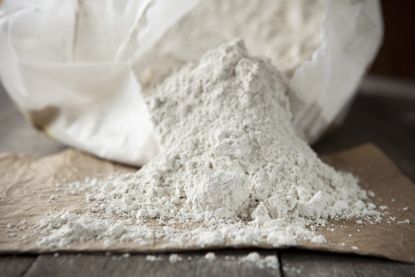Garden Grade Vs. Food Grade Diatomaceous Earth: What Is Garden Safe Diatomaceous Earth


While one type of diatomaceous earth is toxic to humans and animals, there is another type that is relatively safe to use. The type you should purchase depends on the intended use. Find out about the advantages and disadvantages of garden grade vs. food grade diatomaceous earth in this article.
Types of Diatomaceous Earth
The two types of diatomaceous earth include food grade and garden grade, also called pool grade. Food grade is the only type that is safe to eat, and you have probably eaten small quantities of diatomaceous earth without realizing it. That’s because it is mixed in with stored grain to prevent the grain from becoming infested with mealworms and other insects. Some people use food grade diatomaceous earth as a natural remedy for a variety of human and pet ailments. It isn’t recommended these days because we have better, safer ways of dealing with health problems. It is also a pretty good flea killer, but remember that dogs and cats groom themselves by licking their fur, so you’ll want to use food grade rather than garden safe diatomaceous earth for any purpose that causes it to come in contact with your pet. Another difference between food grade diatomaceous earth and regular garden grade is that the garden grade may have insecticides and other chemicals mixed in. It’s best to reserve garden or pool grade for outdoor use. In fact, many experts feel that garden grade should only be used for pool filtration and industrial applications. When using any grade of diatomaceous earth, take care not to inhale the dust. When the diatoms are ground in the manufacturing process, the dust that results is nearly pure silica. Inhaling the product can damage the lungs and irritate the eyes and skin. It’s best to wear a mask and gloves to prevent injury. One of the benefits of food grade diatomaceous earth is that it doesn’t contain insecticides. Even so, it does a good job of getting rid of insects indoors and out. Use it to safely and effectively repel and kill silverfish, crickets, fleas, bedbugs, garden snails, and cockroaches.
Gardening tips, videos, info and more delivered right to your inbox!
Sign up for the Gardening Know How newsletter today and receive a free download of our most popular eBook "How to Grow Delicious Tomatoes."

Jackie Carroll has written over 500 articles for Gardening Know How on a wide range of topics.
-
 Urban Composting Guide: How To Compost In The Middle Of The City
Urban Composting Guide: How To Compost In The Middle Of The CityUrban composting does not have to be daunting. You can compost in the city, and maybe even try some urban worm composting!
By Mary Ellen Ellis
-
 Shrub Diseases And Pests To Watch Out For
Shrub Diseases And Pests To Watch Out ForShrub diseases and pests can be challenging. Learn how to recognize and eradicate them before they can present a danger to your plants.
By Susan Albert